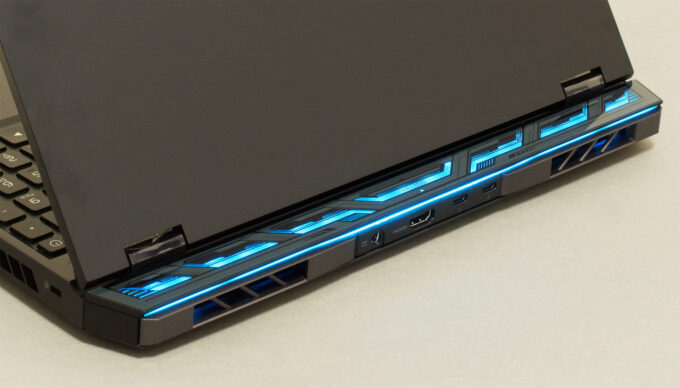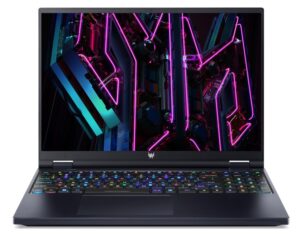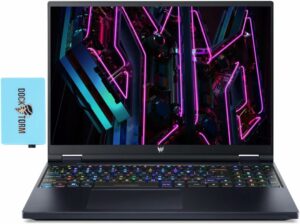Acer Predator Helios 16 (PH16-71) review – liquid metal meets a huge power draw
Verdict
 Once again, the Acer Predator Helios is ready to inspire many people. It is clearly a medium-high-end gaming notebook, which has a ton of capabilities. The inclusion of a super well-populated port selection is great. Two Thunderbolt 4 ports, a MicroSD card slot, three USB Type-As, and more will be enough for pretty much everybody.
Once again, the Acer Predator Helios is ready to inspire many people. It is clearly a medium-high-end gaming notebook, which has a ton of capabilities. The inclusion of a super well-populated port selection is great. Two Thunderbolt 4 ports, a MicroSD card slot, three USB Type-As, and more will be enough for pretty much everybody.
Its internals are easy to access (although you need the slightly less common Torx screwdriver). You can upgrade your memory, and your storage, as there are two slots for either of them.
Acer Predator Helios 16 (PH16-71)’s IPS panel has a WQXGA resolution with a 16:10 aspect ratio, comfortable viewing angles, a good contrast ratio, and a high maximum brightness. It covers 99% of the DCI-P3 color gamut, as well as an accurate color representation.
In addition, the display doesn’t use PWM for brightness adjustment. The 240Hz refresh rate is paired with fast pixel response times, while the G-Sync capability means you will get a super smooth frame transition.
Not in the last place, there is a MUX switch, which allows you to extract the maximum out of your graphics card. However, it won’t ever run at 140W, as its TGP suggests. Instead, like the Lenovo Legion Pro 5 (16″, 2023), it stays at about 100W during gaming.
On the other hand, the processor has a pretty weird behavior. It runs at rather low P-core clocks, while the E-cores are blasting higher than 3.50 GHz. This might be a firmware issue or something with the liquid-metal application on our unit. We would be grateful if you post a comment with your experience with the same device below the review.
Interestingly, there are zero issues during gaming, regardless of the awkward CPU clocks. The laptop is comfortable in terms of typing experience, but a little loud, when it comes to noise.
At the end of the day, if we omit the CPU temperature results, we are pretty happy with the Predator Helios 16 (PH16-71). On the other hand, the Lenovo Legion Pro 5 (16″, 2023) might be a better option for people looking for more stable CPU performance.
You can check the prices and configurations in our Specs System: https://laptopmedia.com/series/acer-predator-helios-16-ph16-71/
Pros
- Low GPU temperatures
- 2x M.2 PCIe x4 Gen 4 slots, 2x DDR5 RAM SODIMM slots in dual channel, Wi-Fi 6
- Covers 99% of the DCI-P3 color gamut and has accurate color representation (BOE NE160QDM-NZ2 (BOE0B17))
- Snappy panel with quick response times (BOE NE160QDM-NZ2 (BOE0B17))
- No PWM (BOE NE160QDM-NZ2 (BOE0B17))
- G-Sync support + MUX switch
- Wide port selection
- Great keyboard and touchpad
- The keyboard remains cool after long gaming sessions
- Good build quality
Cons
- Weird CPU behavior
- Subpar battery life










Thanks, Alex. Very helpful. Question on the HDMI port: do you know whether it’s truly FRL? I’ve seen a lot that are actually TMDS or otherwise less than true FRL specs. I can’t find anything in the Acer’s documentation.